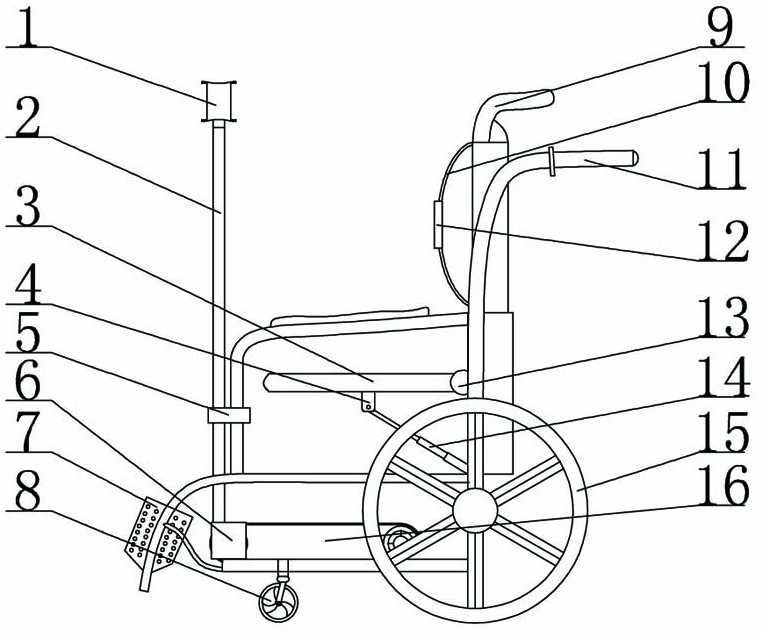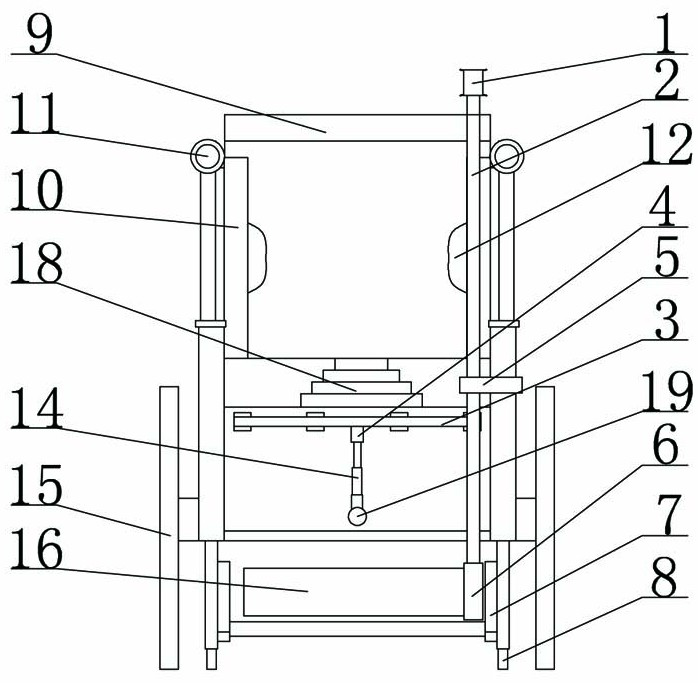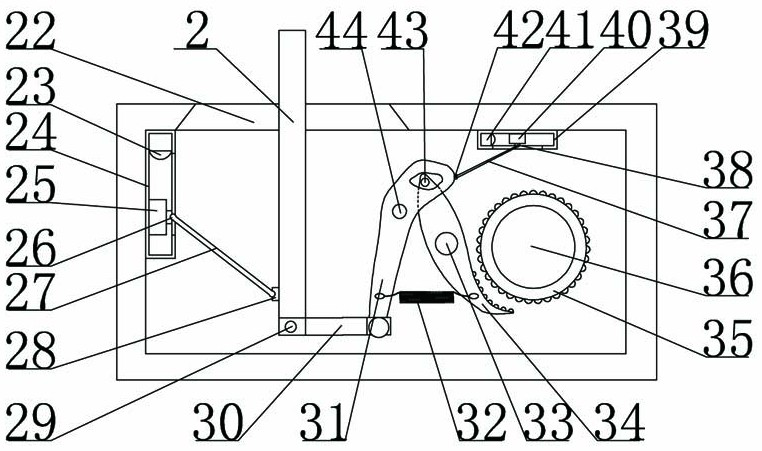An auxiliary recovery device for liver transplant patients
An auxiliary recovery and liver transplantation technology, which is applied in transportation and packaging, vehicle rescue, gymnastics equipment, etc., can solve the problems of patient injury, patient standing effort, high mortality rate, etc., and achieve the effect of reducing workload and protecting patients
- Summary
- Abstract
- Description
- Claims
- Application Information
AI Technical Summary
Problems solved by technology
Method used
Image
Examples
Embodiment Construction
[0018] The present invention will be further described in detail below in conjunction with the accompanying drawings and examples. The following examples are explanations of the present invention and the present invention is not limited to the following examples.
[0019] like Figures 1 to 4 As shown, an auxiliary recovery device for liver transplantation patients includes a handle 1, the handle 1 is fixed on the upper end of the push rod 2, the middle part of the push rod 2 passes through the fixing device 5, and the first fixing rod 21 in the middle part of the fixing device 5 passes through the push rod 2 , the right side of the fixing device 5 is set on the fixing frame of the recovery device, the lower part of the push rod 2 is set in the rotating device 6, the movable pedal 7 is arranged symmetrically on the fixing frame on the left side of the rotating device 6, and the left side of the upper side plate of the rotating device 6 is set to rotate Slot 22, the right side ...
PUM
 Login to View More
Login to View More Abstract
Description
Claims
Application Information
 Login to View More
Login to View More - R&D Engineer
- R&D Manager
- IP Professional
- Industry Leading Data Capabilities
- Powerful AI technology
- Patent DNA Extraction
Browse by: Latest US Patents, China's latest patents, Technical Efficacy Thesaurus, Application Domain, Technology Topic, Popular Technical Reports.
© 2024 PatSnap. All rights reserved.Legal|Privacy policy|Modern Slavery Act Transparency Statement|Sitemap|About US| Contact US: help@patsnap.com










